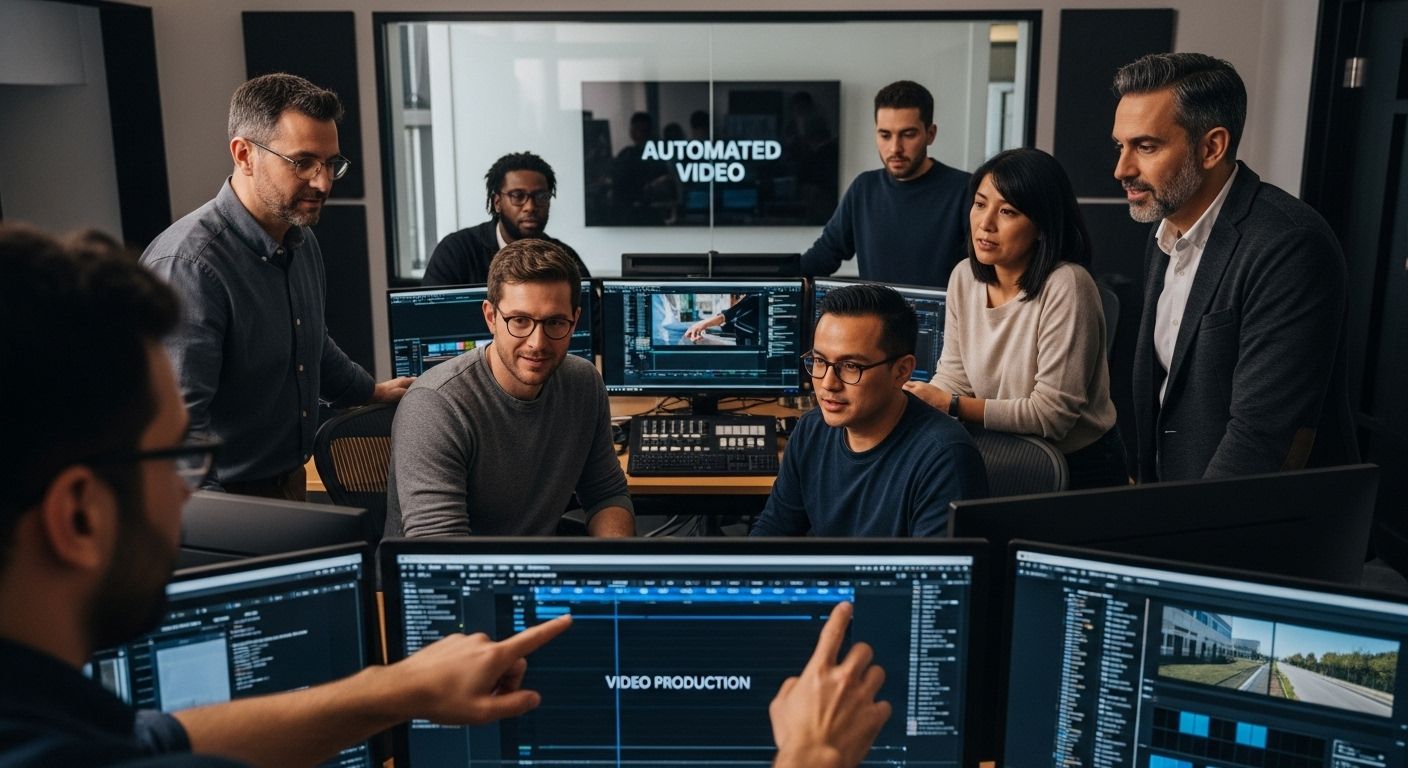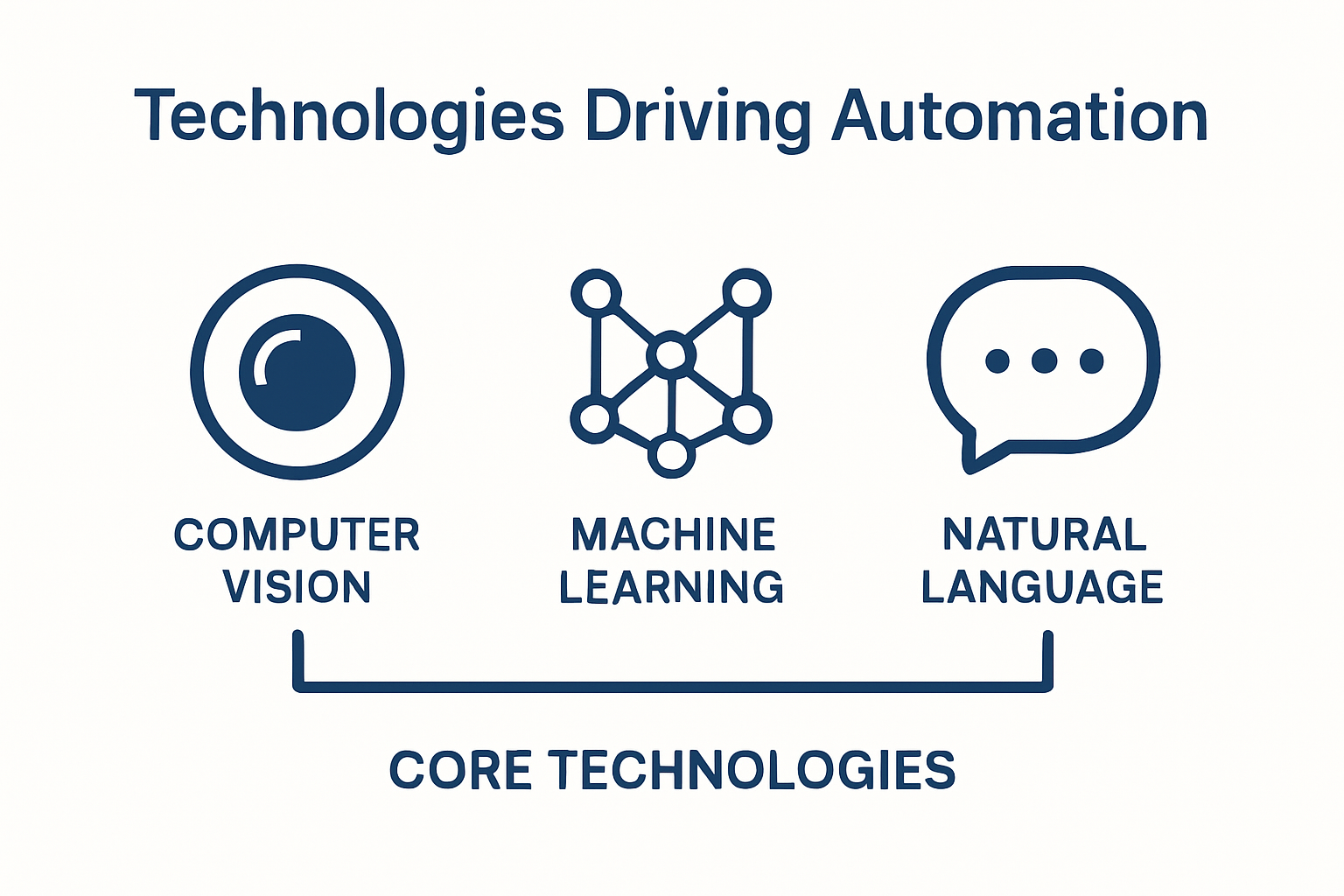Understanding Automated Video Production: A Complete Guide
- info1419758
- Sep 8
- 8 min read

Automated video production is changing how visual stories get made. With advanced systems now able to cut editing time by up to 80 percent thanks to machine learning and AI, this innovation goes way beyond simple time savings. Most people expect these tools to churn out quick, generic clips. The reality is automated video can now create content that matches the highest creative standards, opening doors for artists and beginners alike.
Table of Contents
Quick Summary
Takeaway | Explanation |
Automated video production enhances efficiency | It reduces manual editing, allowing creatives to produce content faster. |
Advanced technologies democratize content creation | Small teams can now access tools for high-quality video production. |
Creative focus is improved through automation | Fewer repetitive tasks enable more time for storytelling and innovation. |
Customized content meets audience preferences | Systems analyze viewer engagement to generate relevant, tailored videos. |
Automated systems streamline workflow stages | Key processing stages include data analysis, intelligent editing, and narrative structuring. |
What is Automated Video Production?
Automated video production represents a transformative approach to creating visual content by leveraging advanced technologies and artificial intelligence to streamline the video creation process. Unlike traditional video production that relies heavily on manual intervention, automated video production uses sophisticated algorithms and machine learning techniques to generate, edit, and optimize video content with minimal human input.
The Core Technological Framework
At its foundation, automated video production integrates multiple technological components to reduce human labor and increase efficiency. According to research from MIT’s Computer Science and Artificial Intelligence Laboratory, these systems typically incorporate:
Generative AI algorithms capable of creating visual content
Object detection systems for intelligent scene composition
Automated camera calibration techniques
Machine learning models for content selection and narrative structure
These technological elements work synergistically to transform raw visual data into polished, professional video content with remarkable speed and precision.
The table below summarizes the major technological components driving automated video production, along with their functions and impact on the creative process.
Technology Component | Function | Impact on Automated Production |
Generative AI Algorithms | Create visual and audio content | Enable autonomous content creation |
Object Detection Systems | Identify and segment elements in footage | Enable intelligent scene composition |
Automated Camera Calibration | Adjust perspectives and maintain visual quality | Improve accuracy and reduce manual setup |
Machine Learning Models | Select content and structure narrative | Accelerate editing and enhance storytelling |
Computer Vision | Understand and analyze video frames | Support editing, transitions, and effects |
Natural Language Processing | Interpret and generate narrative | Create context-aware storytelling |
Deep Neural Networks | Advanced analysis and predictive editing | Optimize engagement and automate decisions |
Practical Applications and Transformative Potential
Automated video production is not just a theoretical concept but a practical solution across multiple industries. Creative teams in advertising, media production, entertainment, and digital marketing are increasingly adopting these technologies to accelerate content creation. The core advantage lies in its ability to dramatically reduce production timelines while maintaining high-quality standards.
For instance, companies can now produce marketing videos, training materials, social media content, and even complex narrative pieces with significantly reduced manual intervention. By understanding how project management software integrates with video production, businesses can further optimize their content creation workflows and leverage these automated technologies effectively.
Why Automated Video Production Matters for Creatives
In the rapidly evolving digital media landscape, automated video production represents a powerful tool that empowers creative professionals to transcend traditional production limitations. By integrating advanced technological solutions, creatives can unlock unprecedented opportunities for innovation, efficiency, and artistic expression.
Reimagining Creative Workflow Efficiency
According to research from the Associated Press, automation dramatically transforms creative workflows by reducing repetitive tasks and enabling professionals to focus on higher-level creative strategies. The key advantages include:
Accelerated Content Production: Reducing time spent on manual editing and technical processes
Enhanced Creative Focus: Allowing more energy for storytelling and conceptual development
Consistent Quality Control: Implementing standardized production techniques across projects
These technological advancements mean creatives can produce more sophisticated content with significantly reduced time investments, enabling faster market responsiveness and increased project throughput.

Democratizing Creative Production
Automated video production tools are breaking down traditional barriers to entry in media creation. Small creative teams and independent professionals can now access sophisticated production capabilities that were previously available only to well-resourced studios. Exploring video production techniques for impactful storytelling becomes more accessible as technological barriers diminish.
By leveraging machine learning algorithms and intelligent editing systems, creatives can generate high-quality visual narratives without extensive technical training. This democratization enables more diverse voices to enter media production, fostering innovation and expanding creative possibilities across multiple industries.
How Automated Video Production Works in Detail
Automated video production represents a complex technological ecosystem where multiple advanced systems collaborate to transform raw visual content into polished, professional media. Understanding the intricate mechanics behind this process reveals the sophisticated interplay of artificial intelligence, machine learning, and computational algorithms.
Technological Architecture and Processing Stages
According to research investigating machine learning techniques in short video production, the automated video production workflow typically encompasses several critical processing stages:
Data Ingestion: Collecting and importing raw video and audio materials
Content Analysis: Utilizing machine learning algorithms to evaluate visual quality
Intelligent Editing: Automatically selecting optimal shots and sequences
Narrative Optimization: Structuring content for maximum engagement
These stages work synergistically, with each component performing specialized tasks that collectively streamline the production process. Machine learning models continuously analyze visual data, identifying patterns, detecting key moments, and making sophisticated editing decisions with minimal human intervention.
This table outlines the typical stages involved in automated video production workflows, highlighting the purpose and contribution of each stage.
Workflow Stage | Description | Contribution to Automation |
Data Ingestion | Collect and import raw video, audio, and metadata | Gathers necessary inputs efficiently |
Content Analysis | Evaluate visual quality, detect scenes, and emotions | Identifies key content and segments |
Intelligent Editing | Select optimal shots, sequences, and transitions | Reduces manual editing time |
Narrative Optimization | Structure content for audience engagement | Boosts relevance and viewer retention |
Algorithmic Decision Making and Content Generation
The core of automated video production lies in its ability to make intelligent, context-aware decisions. Advanced neural networks can now recognize emotional tones, understand narrative structures, and even predict viewer engagement based on historical data. When planning a video shoot, these systems can recommend optimal shooting strategies, predict potential challenges, and suggest creative approaches.
By integrating computer vision, natural language processing, and predictive analytics, automated video production systems transform complex creative processes into streamlined, data-driven workflows. The result is a powerful technological approach that enhances creative potential while reducing technical barriers and production time.
Key Concepts and Technologies Behind Automation
Automated video production is underpinned by a sophisticated array of technological frameworks that transform traditional content creation methodologies. These advanced systems leverage cutting-edge computational techniques to reimagine how visual narratives are conceptualized, produced, and delivered.
Foundational Technological Components
According to research published by the Association for Computing Machinery, the technological landscape of video automation encompasses several critical domains:
Computer Vision: Enabling machines to interpret and understand visual information
Machine Learning Algorithms: Facilitating intelligent decision-making and pattern recognition
Natural Language Processing: Supporting contextual understanding and narrative generation
Deep Neural Networks: Providing sophisticated analysis and predictive capabilities
These interconnected technologies work in concert to create intelligent systems capable of understanding, analyzing, and recreating complex visual storytelling experiences with remarkable precision and creativity.

Intelligent Content Generation and Analysis
The real power of automated video production emerges from its ability to process and interpret multilayered information simultaneously. Advanced algorithms can now detect emotional nuances, understand narrative structures, and generate content that resonates with specific audience segments. When understanding video production techniques, these technologies represent a paradigm shift from manual crafting to intelligent content generation.
By integrating artificial intelligence with creative processes, automated video production systems transform complex computational models into seamless, engaging visual experiences. The technological infrastructure enables unprecedented levels of personalization, efficiency, and creative exploration across diverse media landscapes.
Real-World Applications of Automated Video Production
Automated video production has rapidly transitioned from theoretical concept to practical implementation across multiple industries. By integrating advanced technological frameworks, organizations are transforming traditional content creation methodologies and unlocking unprecedented creative and operational efficiencies.
Industry-Specific Transformations
According to research from artificial intelligence content acquisition studies, automated video production demonstrates remarkable versatility across diverse sectors:
Media and Entertainment: Generating dynamic news content and sports highlights
Marketing and Advertising: Creating personalized promotional materials
Education: Developing interactive learning modules and training videos
Corporate Communications: Producing internal briefings and stakeholder presentations
These applications demonstrate how machine learning and computational algorithms can adapt to complex storytelling requirements while maintaining high production standards and reducing resource expenditures.
The table below compares automated video production applications across major industries, showing how each sector benefits from this technology.
Industry | Example Applications | Key Benefits |
Media and Entertainment | News content, sports highlights | Rapid turnaround, consistency |
Marketing and Advertising | Personalized promotional materials | Scalability, targeted messaging |
Education | Interactive learning modules, training videos | Accessibility, engagement |
Corporate Communications | Internal briefings, stakeholder presentations | Efficiency, professionalism |
Precision and Scalability in Content Creation
The true power of automated video production emerges through its ability to generate contextually relevant content at scale. Advanced systems can now analyze audience preferences, detect emotional resonance, and dynamically adjust narrative structures to maximize engagement. When minimizing production costs for media teams, these technological solutions represent more than mere efficiency tools they are transformative strategic assets.
By bridging technological innovation with creative expression, automated video production enables organizations to produce sophisticated visual narratives that are simultaneously personalized, responsive, and operationally intelligent. The result is a new paradigm of content creation that democratizes professional-grade video production across global industries.
Scale Your Vision With Seamless Automated Video Production Support
You’ve just learned how automation in video production transforms what’s possible for creative teams by streamlining workflows, controlling quality, and opening doors to bold storytelling. But without the right local partner, enjoying these benefits in Switzerland can quickly become overwhelming—especially when facing unfamiliar logistics, strict permits, or sourcing expert crews. Even with advanced automation and artificial intelligence in your toolkit, a lack of reliable on-the-ground support can stall your creative process and put your entire shoot at risk.

Let our team at Video Production Switzerland eliminate the logistical friction so you can focus on harnessing the power of automated production techniques and creative innovation. We manage every local detail—from trusted crew and gear sourcing to smooth permit handling and location coordination—giving you the freedom to maximize efficiency and deliver at scale. Don’t let local barriers hold back your automated video vision. Book your free consultation today at https://videoproductionswitzerland.com and see how a dedicated Swiss-based partner accelerates high-quality, on-time production results.
Frequently Asked Questions
What is automated video production?
Automated video production is a modern approach that uses advanced technologies and artificial intelligence to streamline the video creation process, significantly reducing the need for manual intervention.
How does automated video production work?
It involves multiple stages, including data ingestion, content analysis, intelligent editing, and narrative optimization, utilizing machine learning and other advanced technologies to create polished video content efficiently.
What are the benefits of using automated video production?
The benefits include accelerated content production, enhanced creative focus, and consistent quality control, allowing creatives to produce high-quality content more efficiently and at a lower cost.
In which industries is automated video production applied?
Automated video production is utilized across various sectors, including media and entertainment, marketing and advertising, education, and corporate communications, transforming how content is created and distributed.
Recommended

Comments